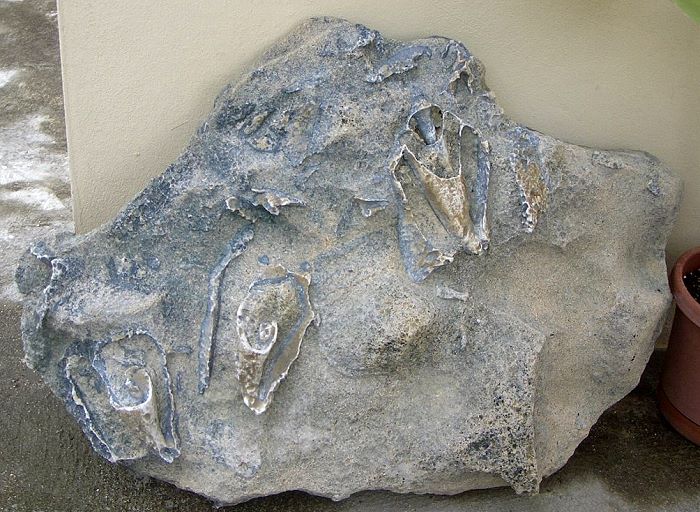Data:
My son and I found this rock with shell fossils on a small island by Puerto
Rico. Any ideas what the shells are and about what period they are from?
Send thoughts and
ideas to:
Email: Steve

Ideas:
-
gigas is probably correct. They are relatively common and obvious in Pleistocene deposits in many parts of the Caribbean; I have seen them in various places in the Bahamas.
Its being a small island off Puerto Rico fits with the Pleistocene guess; the large islands and volcanically/tectonically active small islands (e.g., the Lesser Antilles) may have older fossils, but small islands on relatively stable crust, such as the Bahamas, are almost entirely Pleistocene in their surficial deposits... Dr. David C - Yes, the
fossil is very definitely from Strombus gigas. I also have a piece of
one collected there about 10 years ago. The place is Icacos Island,
off of Fajardo, Puerto Rico.
The Strombus were quite heavy with their cement-like interiors. This is why I returned with only one!! (I saw no complete fossils there.)...Carolyn -
The mistery fossil could be an Strombus. Like the canarien Strombus bubonius ( antecessor of St. latus)...Jose H.
-
gigas remains moderately common, though overfishing is a problem in many areas. Although a fossil specimen is not as colorful as a modern one, it may be easier to convince a customs agent that you did not collect it alive than if you find a nice empty modern shell.
In the eastern U.S., most of the late Pleistocene (ice age) fossil shells are of living species. Earlier in the Pleistocene, and especially before the mid-Pliocene (ca. 3.5 million), the proportion of extinct species is much higher...Dr. David C - There are many species which have been in existence for a long time. Therefore it is possible to find fossil specimens of them as well as living specimens...Paul M.